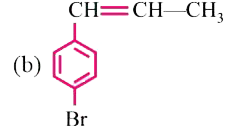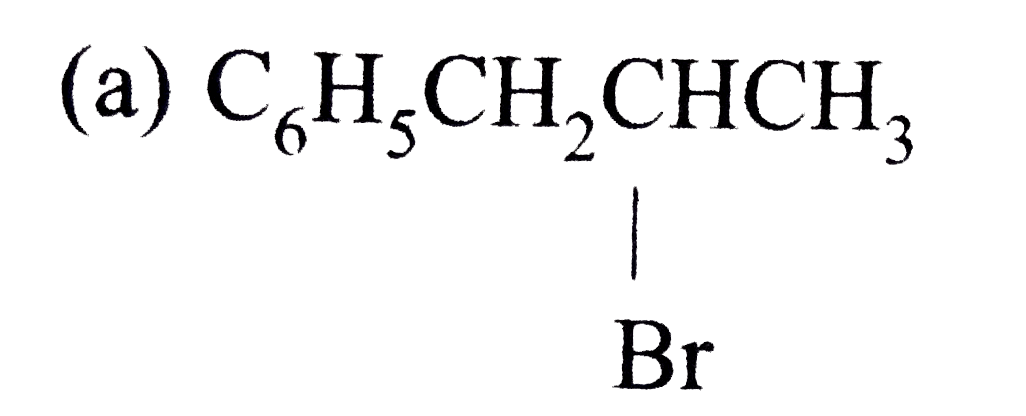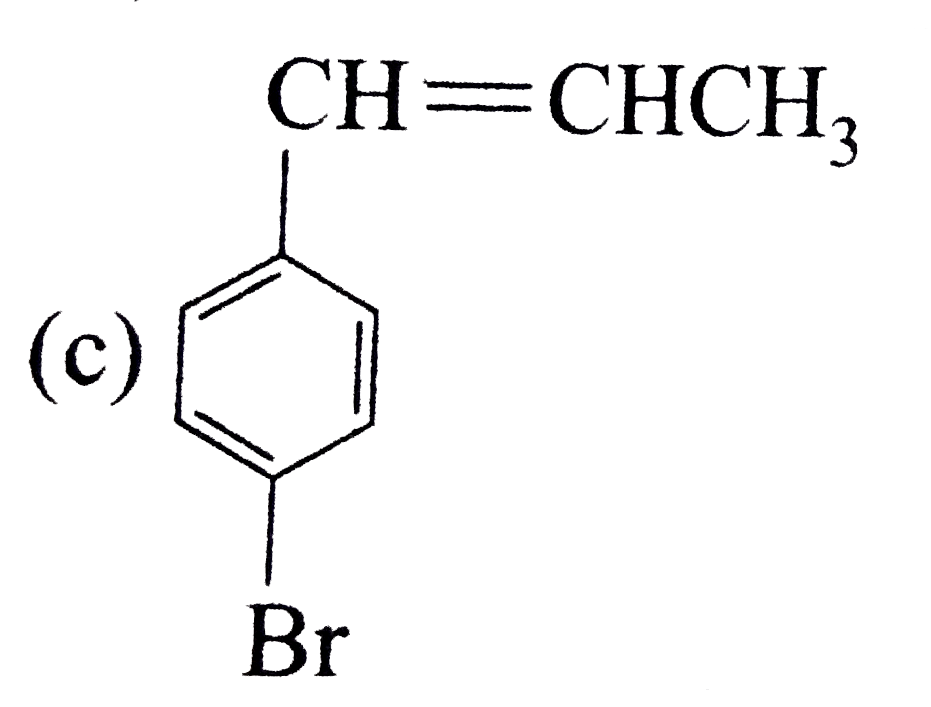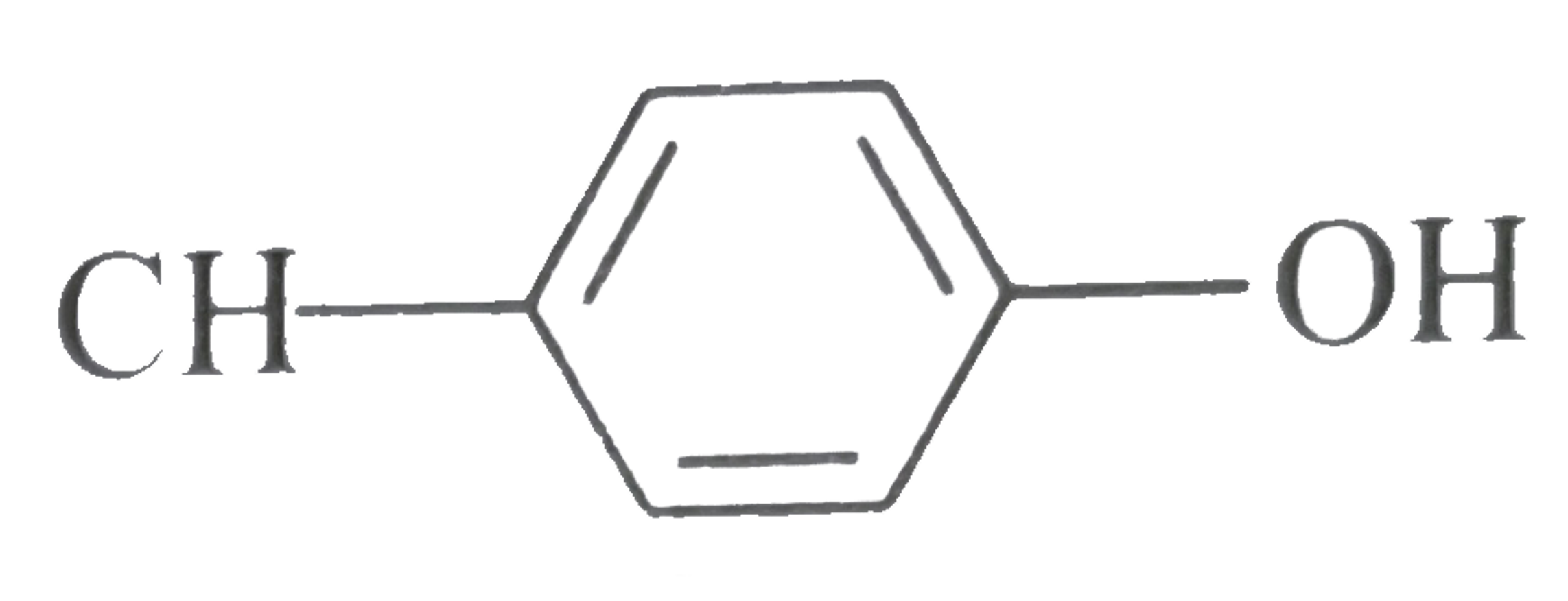The reaction of C6H5−CH=CH−CH3 with HBr produces
C6H5−CH2CH2−CH2−Br

C6H5−Br∣CH−CH2−CH3
C6H5−CH2−Br∣CH2−CH3
The correct Answer is:C
To determine the product of the reaction between C6H5−CH=CH−CH3 (which is styrylpropene) and HBr, we can follow these steps:
Step 1: Identify the Reactants
The reactant is C6H5−CH=CH−CH3, which consists of a phenyl group (C6H5) attached to a double bond (C=CH) and a propyl group (CH3). HBr is a strong acid that dissociates into H+ and Br- ions.
Step 2: Protonation of the Alkene
When HBr reacts with the alkene, the double bond (C=CH) can undergo protonation. The H+ from HBr can add to one of the carbon atoms in the double bond. Due to Markovnikov's rule, the hydrogen will add to the carbon that is less substituted.
In this case, the double bond is between the second and third carbon atoms:
C6H5−CH=CH−CH3
The proton will add to the carbon atom that is bonded to the CH3 group (the less substituted carbon), leading to the formation of a more stable carbocation.
Step 3: Formation of the Carbocation
After the protonation, the structure becomes:
C6H5−CH2−CH+−CH3
This results in a carbocation at the second carbon (C2) of the double bond.
Step 4: Nucleophilic Attack by Bromide Ion
The Br- ion, which is the nucleophile, will then attack the positively charged carbon (C2) of the carbocation. This will lead to the formation of the final product.
Step 5: Final Product
The final product after the nucleophilic attack will be:
C6H5−CH2−CHBr−CH3
This compound is 1-bromo-3-phenylpropane.
Summary of the Reaction
The reaction of C6H5−CH=CH−CH3 with HBr produces 1-bromo-3-phenylpropane.
---
The reactant is C6H5−CH=CH−CH3, which consists of a phenyl group (C6H5) attached to a double bond (C=CH) and a propyl group (CH3). HBr is a strong acid that dissociates into H+ and Br- ions.
When HBr reacts with the alkene, the double bond (C=CH) can undergo protonation. The H+ from HBr can add to one of the carbon atoms in the double bond. Due to Markovnikov's rule, the hydrogen will add to the carbon that is less substituted.
C6H5−CH=CH−CH3
The proton will add to the carbon atom that is bonded to the CH3 group (the less substituted carbon), leading to the formation of a more stable carbocation.
After the protonation, the structure becomes:
C6H5−CH2−CH+−CH3
This results in a carbocation at the second carbon (C2) of the double bond.
The Br- ion, which is the nucleophile, will then attack the positively charged carbon (C2) of the carbocation. This will lead to the formation of the final product.
The final product after the nucleophilic attack will be:
C6H5−CH2−CHBr−CH3
This compound is 1-bromo-3-phenylpropane.
The reaction of C6H5−CH=CH−CH3 with HBr produces 1-bromo-3-phenylpropane.
Topper's Solved these Questions
- BOOK - CBSE COMPLEMENTARY MATERIALCHAPTER - HALOALKANES AND HALOARENESEXERCISE - Assertion and Reasoning2videos
HALOALKANES AND HALOARENES
- BOOK - CBSE COMPLEMENTARY MATERIALCHAPTER - HALOALKANES AND HALOARENESEXERCISE - Matching Column Type2videos
HALOALKANES AND HALOARENES
- BOOK - CBSE COMPLEMENTARY MATERIALCHAPTER - GENERAL PRINCIPLES AND PROCESSES OF ISOLATION OF ELEMENTSEXERCISE - Short Answer-II Type Questions5videos
GENERAL PRINCIPLES AND PROCESSES OF ISOLATION OF ELEMENTS
- BOOK - CBSE COMPLEMENTARY MATERIALCHAPTER - P-BLOCK ELEMENTSEXERCISE - LONG ANSWER TYPE QUESTIONS15videos
P-BLOCK ELEMENTS
Similar Questions
Knowledge Check
- Question 1 - Select One
The reaction of C6H5CH=CHCH3 with HBr produces :
AC6H5CH2CH2CH2BrBC6H5CH2−CHCH3∣BrCC6H5−CHCH2∣BrCH3Dp−Br−C6H4−CH=CHCH3 - Question 2 - Select One
The reaction of C6H5CH=CHCH3 with HBr produces
AC6H5CH2CH2CH2BrB CC6H5C∣BrHCH2CH3DC6H5CH2C∣BrHCH3.
CC6H5C∣BrHCH2CH3DC6H5CH2C∣BrHCH3. - Question 3 - Select One
The reaction of C6H50CH=CHCH3 with HBr produces
A BC6H5CH2CH2CH2BrC
BC6H5CH2CH2CH2BrC D
D



 with
with